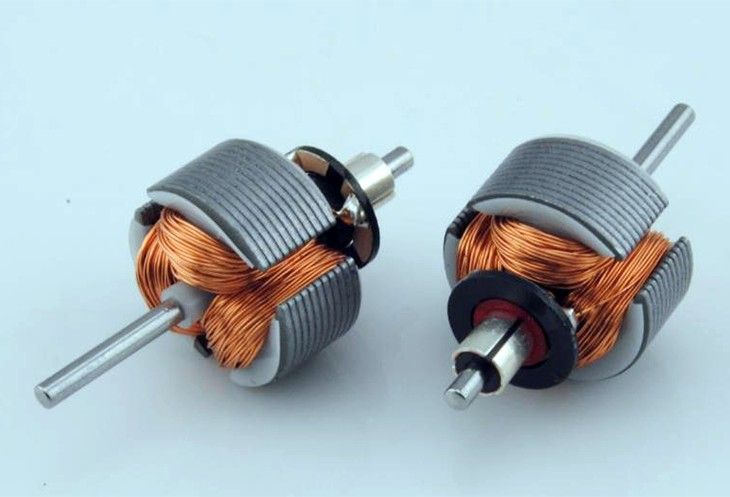Mewn offer trydanol gwell diogelwch, megis moduron atal ffrwydrad, trawsnewidyddion, gwifrau electromagnetig, a balastau ar gyfer lampau fflwroleuol, mae dogn yn cynnwys dirwyniadau mewnol. Y gofynion ar gyfer y dirwyniadau hyn, yn fecanyddol ac yn drydanol, yn uwch na'r rhai ar gyfer dirwyniadau safonol.

Yn gyffredinol, dylai'r wifren inswleiddio a ddefnyddir ar gyfer dirwyn y coiliau hyn gael ei hinswleiddio'n ddwbl, ac ni ddylai diamedr graddedig y coil fod yn llai na 0.25mm.
Ar gyfer y wifren enameled a ddefnyddir i weindio'r coiliau hyn, argymhellir defnyddio GB/T6109.2-2008 “Gwifren Gopr Rownd Enameled Polyester, Dosbarth 155,” GB/T 6109.5-2008 “Wire Copr Crwn Enameled Polyester-imide, Dosbarth 180,” GB/T 6109.6-2008 “Wire Copr Rownd Polyimide Enameled, Dosbarth 220,” neu GB/T6109.20-2008 “Polyester Cyfansawdd Polyamid-imide neu Polyester-imide Enameled Round Copr Wire, Dosbarth 220.”
Yn ogystal, Gradd 1 gellir defnyddio gwifren gopr crwn wedi'i enameiddio fel y nodir yn y safonau hyn, ar yr amod ei fod yn pasio'r profion perthnasol a amlinellir yn y safonau.
Ar ôl dirwyn, dylid defnyddio cyfrwng trwytho priodol i wella priodweddau inswleiddio'r dirwyniadau.
Dylai'r broses impregnation ddilyn dull penodedig y gwneuthurwr, defnyddio technegau fel dipio, diferu, neu impregnation pwysau gwactod (VPI) i lenwi'r bylchau rhwng gwifrau troellog a sicrhau adlyniad cryf. Os yw'r cyfrwng trwytho yn cynnwys toddyddion, dylid perfformio'r trwytho a'r sychu ddwywaith i ganiatáu anweddiad toddyddion.
Yn gyffredinol, ystyrir bod dulliau fel chwistrellu neu gaenu ar gyfer insiwleiddio dirwyn i ben yn annibynadwy offer trydanol sy'n atal ffrwydrad. Dylid rhoi sylw digonol i hyn mewn ymarfer peirianneg.
Ar ben hynny, ar gyfer dirwyniadau foltedd uchel, dylid trin y dirwyniadau trwytho â phaent gwrth-corona i atal peryglon ychwanegol a achosir gan ollyngiadau corona.
Mewn dyfeisiau trydanol gwell diogelwch, boed moduron, coiliau electromagnetig, neu coiliau offer arall, dylent gael eu harfogi yn gyffredinol tymheredd dyfeisiau amddiffyn i atal tymheredd uwch na'r terfyn o dan weithrediad arferol neu amodau annormal cydnabyddedig.
Os nad yw dirwyn yn fwy na'r tymheredd terfyn o dan orlwytho parhaus (megis clo rotor modur), neu os nad yw dirwyn yn destun gorlwytho (fel balast ar gyfer lampau fflwroleuol), yna nid oes angen dyfais amddiffyn tymheredd arno.
Pan fydd offer trydanol gwell diogelwch wedi'i gyfarparu â dyfeisiau amddiffyn tymheredd, gellir gosod y rhain naill ai'n fewnol neu'n allanol. Ta waeth, dylai fod gan y ddyfais amddiffyn y priodol math atal ffrwydrad a dylid ei asesu ar y cyd â'r offer gwarchodedig.
 Shenhai Ffrwydrad-Prawf
Shenhai Ffrwydrad-Prawf
